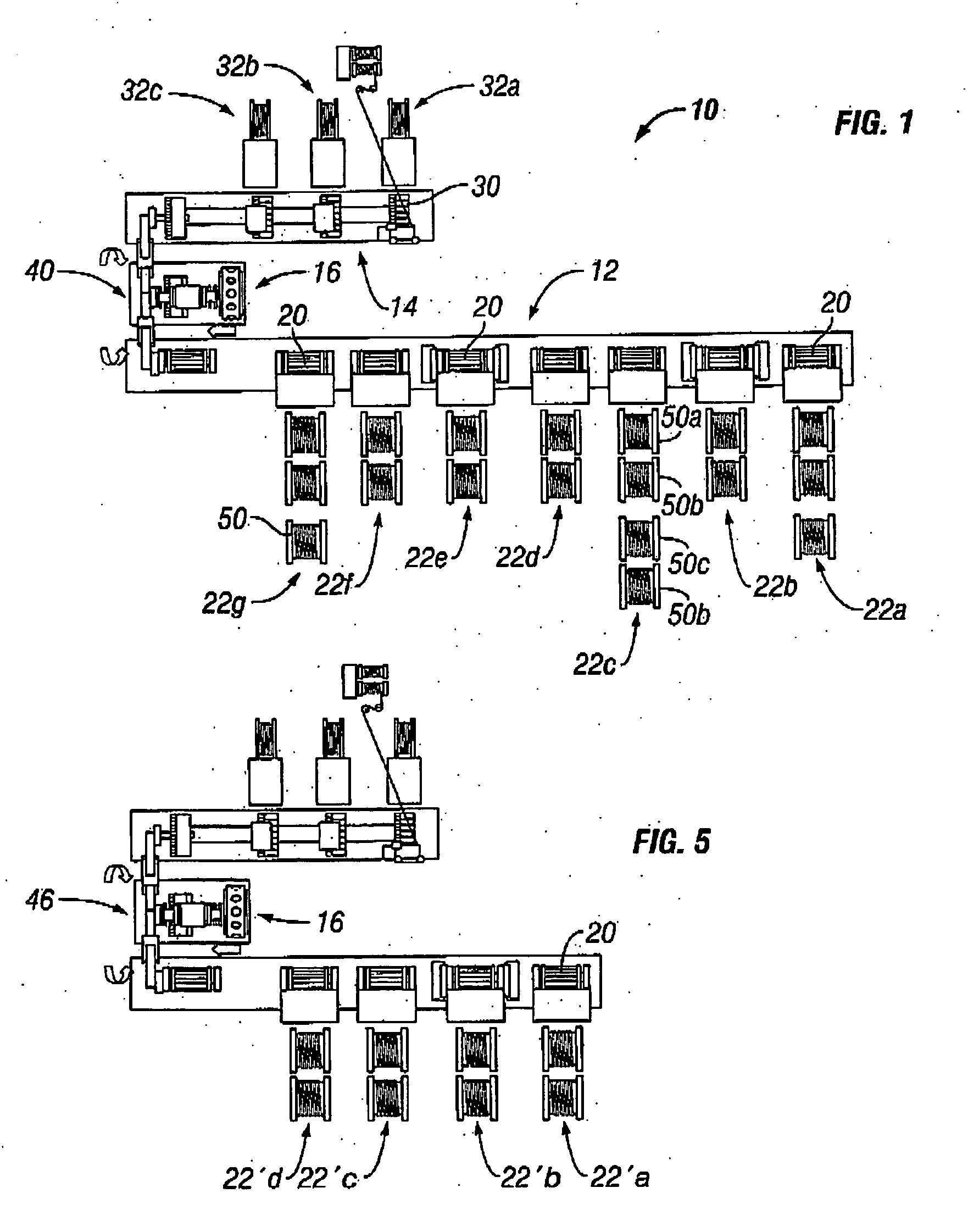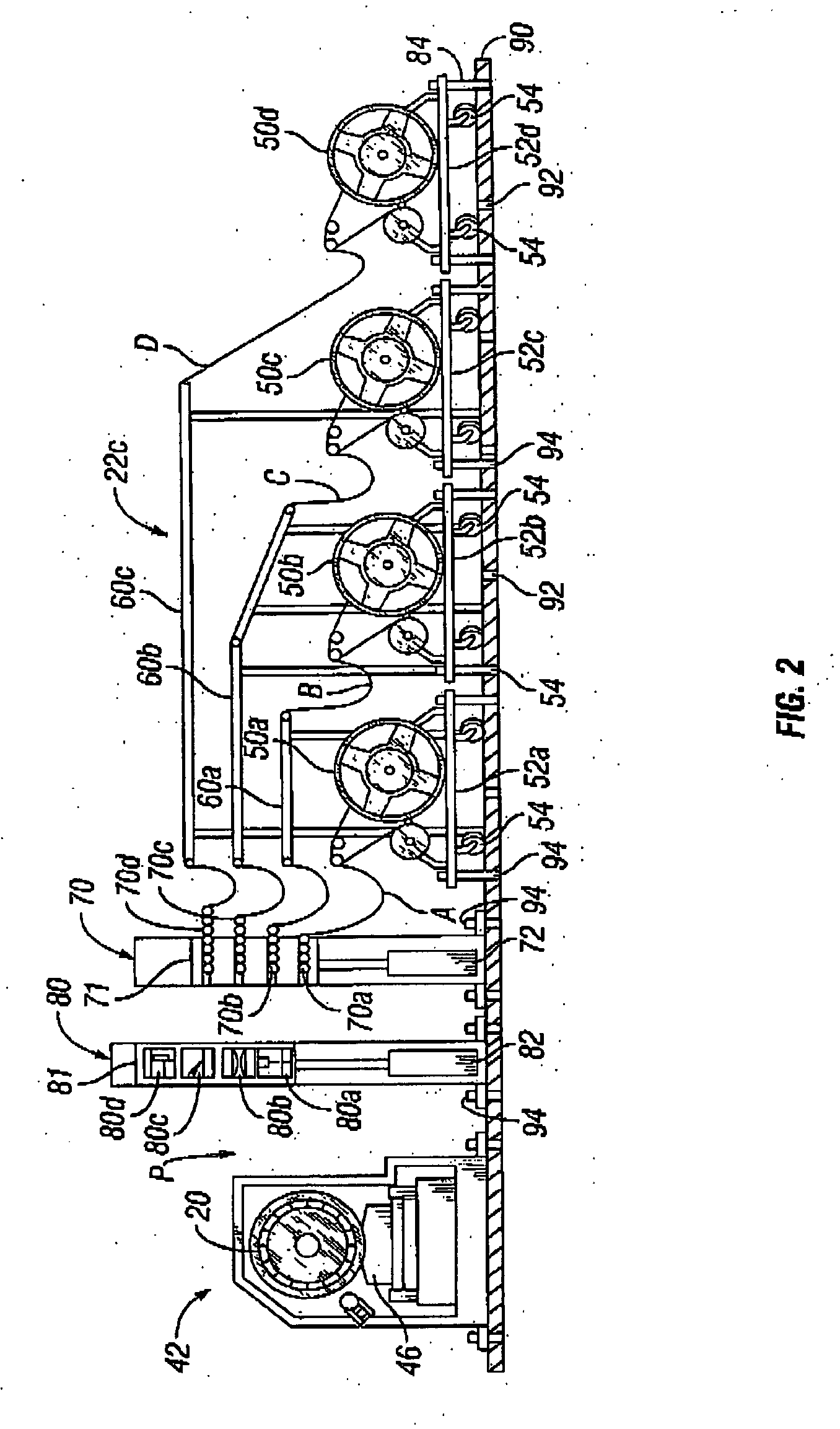Methods and apparatus for making tires and for converting an assembly line for making different types of tires
a technology of assembly line and tire, which is applied in the field of methods and equipment for making tires using an assemblyline technique, can solve the problems of difficult and time-consuming operation of reconfiguring known assembly lines, and inability to meet the needs of short manufacturing runs
- Summary
- Abstract
- Description
- Claims
- Application Information
AI Technical Summary
Problems solved by technology
Method used
Image
Examples
Embodiment Construction
[0013] Depicted schematically in plan view in FIG. 1 is a tire-building machine (assembly machine) 10 which employs an assembly-line approach. The machine includes a carcass line 12 and a belt / tread line 14 operating simultaneously, each feeding to a conventional assembly ring 16 located downstream of the two lines 12, 14. Tire carcasses are assembled in the carcass line 12, and tire belt / tread packages are assembled in the belt / tread line 14. A carcass is joined to a respective belt / tread package in the assembly ring by pressure in a conventional way.
[0014] In the carcass line 12, carriers in the form of tire-building drums 20 are fed sequentially along an assembly path, i.e., from right to left in FIG. 1, past a number of component-applying stations 22a-22g of a suitable number. The drums can be fed in any suitable manner. For example, each drum could be mounted on a carrier, or chariot, which is advanced along a track comprised of rotatable wheels that rotate about respective ho...
PUM
| Property | Measurement | Unit |
|---|---|---|
| length | aaaaa | aaaaa |
| diameters | aaaaa | aaaaa |
| sizes | aaaaa | aaaaa |
Abstract
Description
Claims
Application Information
 Login to View More
Login to View More - R&D
- Intellectual Property
- Life Sciences
- Materials
- Tech Scout
- Unparalleled Data Quality
- Higher Quality Content
- 60% Fewer Hallucinations
Browse by: Latest US Patents, China's latest patents, Technical Efficacy Thesaurus, Application Domain, Technology Topic, Popular Technical Reports.
© 2025 PatSnap. All rights reserved.Legal|Privacy policy|Modern Slavery Act Transparency Statement|Sitemap|About US| Contact US: help@patsnap.com



